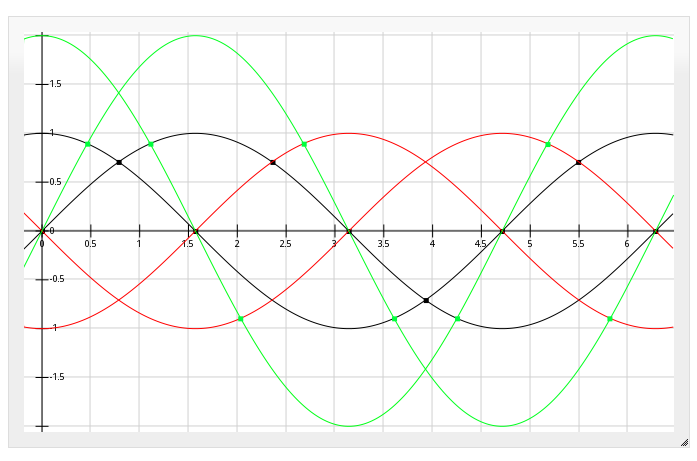OK, I managed to achieve 4x... that's four times the resolution achievable with a *digital* quadrature signal, or 16 discernible positions per slot.
That's right... My encoder has 72 slots, I can detect 1152 discernible positions per revolution!
Here's the basic idea... Look for crossovers:

From the ADC values of channel A and channel B, I'm using A, B, -A, -B, 2A, and 2B...
Thankfully, these are pretty simple math-operations... which means they're *quick*.
I was excited about the 'no-mult' case, described in a previous log, but that is incapable of detecting a position unless (nearly) every *transition*/crossover is detected *immediately*... which is darn-near impossible upon powerup, at the least.
So, instead, 2x... that's a simple enough operation. No multiplication necessary (still) just A+A or B+B, or even A<<1, etc...
This guy, well, I tested it from every possible starting-angle (integer values 0-360), and it had no problem finding its initial position (within the "hysteresis" range). That means it 'auto-aligns' upon power-up, and also means that if one (or several) transitions are somehow "missed" (while processing something else?), it will eventually find the actual location. COOL. No interrupts necessary. Excellent.
SO...
Here's a video. (maybe still uploading...)
 Eric Hertz
Eric Hertz
Discussions
Become a Hackaday.io Member
Create an account to leave a comment. Already have an account? Log In.